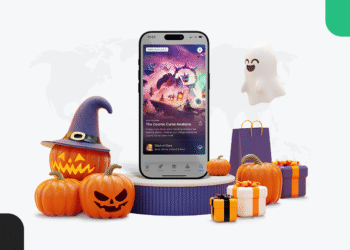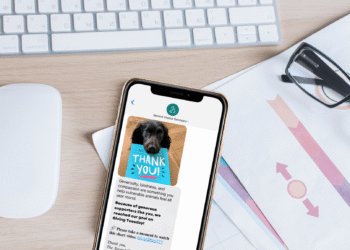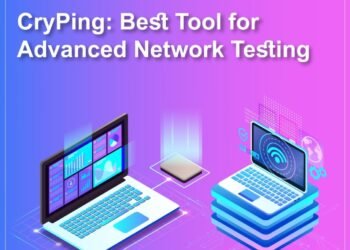
Having a thoughtful, well-structured marketing strategy is a must for today’s nonprofits. While some may still rely on one or two traditional channels, the most successful organizations are embracing multi-channel marketing strategies—ones that help them expand their reach, engage supporters in more personalized ways, and raise more money across programs.
This guide will help you build a smart, effective multi-channel nonprofit marketing strategy, with a special focus on how text messaging fits into the bigger picture. We’ll walk through:
Whether you’re looking to upgrade your existing marketing efforts or start from scratch, this guide will help you develop a modern strategy that aligns with donor preferences and drives measurable results.
What is a Multi-Channel Nonprofit Marketing Strategy?
A multi-channel nonprofit marketing strategy is a coordinated approach to engaging supporters through multiple communication channels. Rather than relying on a single method, nonprofits use a mix of channels, such as SMS, email, and direct mail, to expand their reach, reinforce messaging, and engage donors in the ways they prefer.
In a multi-channel strategy, each channel plays a different role in reaching and nurturing supporters. For example, email might be used for newsletters or detailed appeals, while SMS can deliver quick calls to action and reminders. When these channels work together, your marketing becomes more effective, donor-centric, and results-driven.
Key Benefits of Multi-Channel Nonprofit Marketing
Holistic, integrated marketing strategies come with plenty of impactful benefits for your nonprofit, including:

Increased Reach
Supporters have different communication preferences—some check their email frequently, while others respond more quickly to texts. Using multiple channels ensures you’re not leaving anyone out.
Greater Engagement
When donors receive consistent, compelling messages across several channels, it builds familiarity and encourages action. Each touchpoint reinforces your message and reminds recipients why they support your cause.
Improved Donor Retention
Multi-channel communication helps you stay top of mind with supporters. By meeting them where they are (whether it’s email, mobile, or social media), you’re more likely to build lasting relationships.
Stronger Fundraising Results
According to Feathr’s 2025 State of Nonprofit Marketing, campaigns using three or more channels have significantly higher response rates and fundraising ROI than single-channel efforts. Additionally, Tatango’s own Texting Insights Report shows that combining SMS with email can lift campaign performance across the board, resulting in faster donations, higher conversion rates, and better donor engagement.
Channels to Include in Your Nonprofit Marketing Strategy
Every nonprofit is different, and your marketing strategy should reflect your unique goals, audience, and capacity. But for most organizations, a few core channels are essential.
This isn’t a catch-all list, but these are the channels that consistently help nonprofits drive results when used strategically:
Text Messaging
Text messaging is one of the most powerful (yet underutilized) channels in nonprofit marketing. It’s fast, direct, and cuts through the noise—especially during urgent moments like GivingTuesday, event days, or end-of-year campaigns.
![Example text message that reads, “Hi [Name], we have exciting news! We’ve just launched a new campaign to [Campaign Goal]. Can you help us make it happen with a donation of $25? Click here to give: [Link].”](https://www.tatango.com/wp-content/uploads/2025/08/Nonprofit-Marketing_Example.png)
SMS is a powerful fundraising tool, but that’s not all it can do. Here’s why SMS is such a valuable addition to any kind of marketing strategy:
- Unmatched open rates. Text messages have an average open rate of 99%. This means more eyes on your messages and higher deliverability, especially compared to the average 20–25% open rate for email.
- Faster response times. Most recipients read and respond to a text within minutes, driving quick action to help you meet fundraising and advocacy goals.
- High ROI. Texting drives real results. Tatango clients regularly see dramatic lifts in donations, including a 418% increase over channel projections for the Armed Services YMCA when they launched a targeted SMS campaign.
- Personal connection. Texts feel conversational and immediate, helping you build stronger donor relationships.
- Easy to integrate. SMS enhances other marketing channels. A reminder via text can boost email open rates or push event attendees to complete a donation.
Not sure if you’re ready for SMS? You probably are. Most nonprofits already have a strong base of emails or phone numbers to seed their text list. And with the right partner or texting platform (like Tatango!), it’s easy to get started compliantly and effectively.
Email remains a cornerstone of nonprofit marketing. It’s reliable, cost-effective, and well-suited for long-form communication. In your multi-channel strategy, use email to:
- Share stories and impact updates
- Promote campaigns and donation opportunities
- Send newsletters or monthly updates
- Provide links to forms, surveys, or events
Email and SMS work well together—while email provides detail, SMS prompts action. For example, a GivingTuesday appeal can be sent via email with a follow-up reminder via text.
Social Media
Social media platforms like Facebook, Instagram, LinkedIn, and TikTok offer opportunities to connect with supporters where they already spend time. While your reach can be limited by platform algorithms, social is still useful for:
- Driving awareness and expanding your audience
- Promoting fundraising campaigns and events
- Sharing visual content like videos, photos, and infographics
- Cultivating community and storytelling
Pro Tip: Social media is great for broad engagement, but it shouldn’t exist in a vacuum. Rather than posting content on social alone, use it to support other channels, like email and SMS, where you control deliverability.
Your Website
Your website is your nonprofit’s digital home base. It should clearly communicate your mission, make it easy for supporters to take action, and serve as a consistent touchpoint across campaigns. Use your site to:
- Collect donations
- Promote SMS sign-ups
- Highlight impact stories
- Host event pages and registration forms
- Embed videos, reports, and campaign materials
Consider adding an opt-in form or pop-up on your website to encourage SMS and email list growth. Tatango’s clients have used donation page checkboxes and pop-ups to grow their lists quickly.
Direct Mail
While digital channels dominate, direct mail still plays an important role, especially for reaching older donors or sending high-value appeals. Direct mail can be used for:
- Annual giving solicitations
- Donor thank-you notes
- Event invitations or year-end reports
- Matching gift promotions
It’s best used in combination with digital channels. For instance, direct mail is more effective when timed to reinforce email or SMS campaigns, providing multiple touchpoints across a single campaign.
How to Build a Multi-Channel Nonprofit Marketing Strategy
Now that you know the most effective channels, let’s walk through the steps to build a smart, scalable nonprofit marketing strategy.
1. Analyze Past Marketing Performance
First, take stock of your existing channels and each one’s performance. Start by reviewing your current marketing efforts. Which channels have you used? What results have you seen?
Pay attention to per-channel open rates, click-through rates, opt-out rates, and conversion data. Consider what’s working, what’s not, and where there may be gaps. For more insight, you might conduct a simple audit or SWOT (Strengths, Weaknesses, Opportunities, and Threats) analysis to better understand your marketing strategy’s performance. This helps you prioritize the right channels and tactics as you move forward.
2. Choose Marketing Channels to Incorporate
Use your audit to decide which channels make the most sense to prioritize based on your goals, team capacity, and donor preferences. Remember, a strong multi-channel marketing strategy often includes:

- Text messaging
- Social media
- Your website
- Direct mail
SMS should be a top contender—it’s fast, cost-effective, and complements every other channel in your toolkit. However, you can consider layering in additional platforms as you scale your strategy. You might branch out with paid advertisements or search engine optimization (SEO) content, for example.
Any time you choose additional channels, factor in your team’s ability to manage new channels and any tools or platforms needed to support them. Don’t forget about compliance and security considerations, either.
3. Set General and Channel-Specific Goals
Your nonprofit marketing plan needs clear, measurable objectives. Depending on your strategic priorities and chosen channels, these might look like:
- Growing your SMS list by 20%
- Increasing engagement with your email newsletters by 15%
- Raising $50K through your year-end campaign
Make sure your goals are SMART (specific, measurable, achievable, relevant, and time-bound). And don’t forget to define KPIs to monitor for each channel, such as SMS opt-in rates, email click-through rates, or average donation size per channel.
4. Build Out Your SMS Opt-In List
To text supporters, you need their explicit permission. That means collecting written opt-ins via compliant methods to grow your list strategically. You may add more opt-in opportunities down the line, but start by:
- Adding an SMS checkbox to your donation and event/volunteer registration forms.
- Promoting a short code and keyword (e.g., “Text GIVE to 12345”) on social, in email, and at events
- Running a specific campaign that incentivizes opt-ins (e.g., early access, matched gifts, or behind-the-scenes event content)
With the right partner, growing your SMS list is easy. Use our list calculator to estimate how many supporters you can reasonably text now, then work on collecting more opt-ins with our platform. Tatango makes list building simple and ensures all messages comply with TCPA and nonprofit-specific regulations.
5. Segment Your Target Audience
Once you’ve built your list(s), it’s time to segment your supporters. Not all donors are alike, and sending everyone the same message can limit their effectiveness.
To send more tailored messages, segment your audience based on:
- Giving behavior (recurring vs. one-time donors)
- Event participation
- Communication preferences
- Demographics (age, location, etc.)
- Engagement level (e.g., recent vs. lapsed donors, frequent volunteers)
Segmentation makes every channel more effective. Personalized appeals perform better than generic ones—especially for SMS, where space is limited and timing matters. With Tatango’s Power Segments, AI helps you automatically build highly targeted segments based on real supporter behavior so you send smarter, more personalized messages at scale.
6. Cement Your Messaging
Your messaging should reflect your brand, values, and tone, no matter which channel you’re using. Whether it’s a text or a tweet, supporters should recognize your message instantly. Consistency builds trust and reinforces your mission.
Before launching any new campaigns, align with your team on brand voice and language. Note where your tone might change slightly for different channels while maintaining your nonprofit’s voice. You might create message templates for each channel or use tools like AI to help generate message variations in line with your branding.
Additionally, clarify the kind of asks you want to make and how you’ll inspire action. Make sure your calls to action are clear, compelling, and channel-appropriate.
7. Build an Integrated Content Calendar
Planning your communications in advance helps ensure you balance outreach across channels without overwhelming your audience. Create a detailed content calendar to schedule major campaigns and messages and align timing across channels (e.g., an email launch followed by a text reminder).
For example, your November-December calendar might include:
- Nov 1: Begin SMS opt-in campaign
- Nov 15: Email launch for GivingTuesday
- Nov 25: Direct mail landing
- Nov 27: Text reminder on GivingTuesday morning
- Dec 3: Year-end giving email and social media posts
- Dec 10: Email “thank you” series
- Dec 27: Email and SMS calls for year-end donations
- Dec 31: Final SMS appeal
Use your new content calendars to identify bottlenecks, spot duplication, and create a more streamlined experience across channels. Build in space for ad hoc communications (emergencies, announcing event changes, etc.), but keep the focus on your strategic marketing campaigns.
8. Monitor Your Marketing Strategy’s Performance
Once your strategy is live, the real work begins: measuring, learning, and optimizing. Data-driven marketing leads to stronger results and more confident decision-making.
As you implement your new strategy, track KPIs to gauge marketing success and identify where you need to pivot, such as:
- Open and click-through rates
- Unsubscribe/opt-out rates
- Donations received
- SMS response rates
- Conversion rates by channel
Tatango’s platform makes it easy to monitor performance on a campaign and per-text basis. Get a messaging report for each text that displays its open rate, click-through rate, number of recipients and responses, and fundraising results.

You can also A/B test messages using Tatango to find the best ways to improve their impact. For example, if you notice a drop in SMS click-throughs, you might test a shorter message or a new send time.
Launching Successful Marketing Strategies for Nonprofit Organizations
A well-integrated, multi-channel nonprofit marketing strategy will help you engage more donors, raise more money, and stay top-of-mind year-round. And by incorporating text messaging, you’ll add speed, immediacy, and a personal touch that can supercharge your results. If you’re ready to build smarter marketing strategies that drive impact, Tatango is here to help. We’ve helped nonprofits raise over $600 million through SMS—and we’re just getting started.
Looking for more information before you dive into the world of nonprofit texting? Check out these additional resources:
 Mike Snusz, Director of Nonprofit Customer Experience
Mike Snusz, Director of Nonprofit Customer Experience
Mike Snusz brings nearly two decades of digital fundraising expertise to his role as Director of Nonprofit Customer Experience at Tatango, the industry’s leading text messaging platform for nonprofits. A recognized thought leader in SMS fundraising, Mike regularly speaks at national conferences and contributes insights to resources like the Texting Insights Report and other nonprofit publications.
Before joining Tatango, Mike spent 15 years at Blackbaud, where he led a team of digital consultants helping nonprofits optimize their online giving, email marketing, peer-to-peer fundraising, and monthly giving programs.
He began his nonprofit career in Buffalo, NY, managing the Ride For Roswell from 2003 to 2005—an experience that continues to shape his commitment to helping mission-driven organizations thrive in a digital world.




















